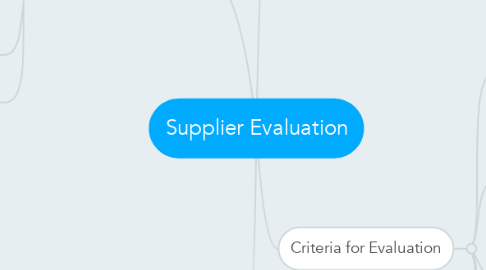
1. Evaluation Strategy
1.1. Classify supplier
1.1.1. _ Performance-based partnership
1.1.2. _ Competitive bidding
1.1.3. _ Securing continuity of supply
1.1.4. _ Category management and e-procurement solutions
1.2. Let supplier know what they mean to us and ask what we mean to them (classification)
1.3. Market research: comparison to other suppliers
2. Evaluation Methods/Approaches
2.1. 10 Cs
2.2. Supplier evaluation model (SEM)
2.3. General capacity testing
2.3.1. Min/max capacity for each certain component
2.3.2. Potential bottlenecks
2.4. Assessment methods
2.4.1. Spreadsheets compare all suppliers' quotations
2.4.2. Qualitative assessment (for close business relationships; done in more detailed manner)
2.4.3. Vendor rating assesses quantitative data (very detailed and complex)
2.4.4. Supplier audit (physical visits)
2.4.5. Cost modelling, takes much time, used by close partnerships
3. References: Weele. A. J. Purchasing and Supply Chain Management. 2010.
4. Goals of Supplier Evaluation
4.1. Good product/service
4.2. Partnership
4.3. Most suitable supplier for firm's business in all criteria (i.e. not just cheapest or fastest or nearest supplier)
4.4. Understanding of the supplier market
5. Criteria for Evaluation
5.1. Capacity
5.1.1. Lead times
5.1.2. Reliable deliveries
5.1.3. Just-in-time management
5.2. Business stability
5.2.1. In finance
5.2.2. In production
5.2.3. Relationship with other customers/suppliers
5.3. Product and supplier quality
5.3.1. Product life cycle
5.3.2. Quality improvements from both sides
5.4. Facility
5.4.1. ISO standard
5.4.2. Machinery
5.4.3. Infrastructure and its development plan
